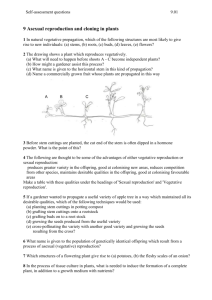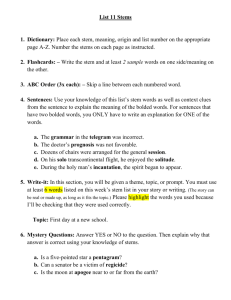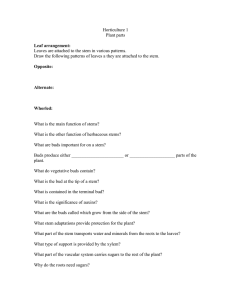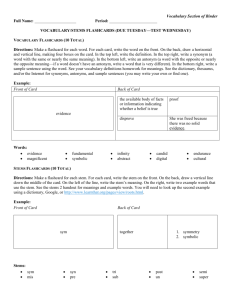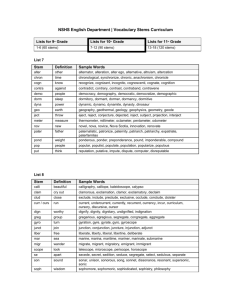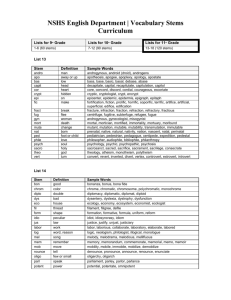Asexual reproduction and cloning in plants - answers
advertisement
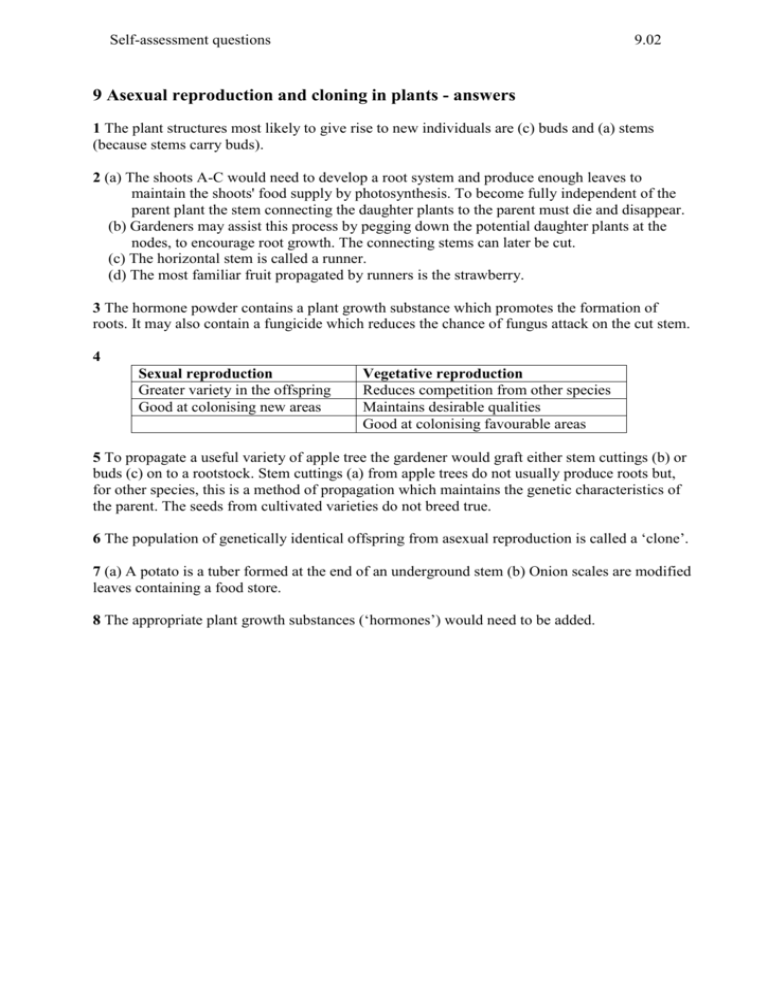
Self-assessment questions 9.02 9 Asexual reproduction and cloning in plants - answers 1 The plant structures most likely to give rise to new individuals are (c) buds and (a) stems (because stems carry buds). 2 (a) The shoots A-C would need to develop a root system and produce enough leaves to maintain the shoots' food supply by photosynthesis. To become fully independent of the parent plant the stem connecting the daughter plants to the parent must die and disappear. (b) Gardeners may assist this process by pegging down the potential daughter plants at the nodes, to encourage root growth. The connecting stems can later be cut. (c) The horizontal stem is called a runner. (d) The most familiar fruit propagated by runners is the strawberry. 3 The hormone powder contains a plant growth substance which promotes the formation of roots. It may also contain a fungicide which reduces the chance of fungus attack on the cut stem. 4 Sexual reproduction Greater variety in the offspring Good at colonising new areas Vegetative reproduction Reduces competition from other species Maintains desirable qualities Good at colonising favourable areas 5 To propagate a useful variety of apple tree the gardener would graft either stem cuttings (b) or buds (c) on to a rootstock. Stem cuttings (a) from apple trees do not usually produce roots but, for other species, this is a method of propagation which maintains the genetic characteristics of the parent. The seeds from cultivated varieties do not breed true. 6 The population of genetically identical offspring from asexual reproduction is called a ‘clone’. 7 (a) A potato is a tuber formed at the end of an underground stem (b) Onion scales are modified leaves containing a food store. 8 The appropriate plant growth substances (‘hormones’) would need to be added.
